It's a house cat! It's a tiger!
Meet the Toyger,
America's next superpet
Meet the Toyger,
America's next superpet
By Kenneth Miller

Mike McGregor
In an oak-shaded backyard 30 miles outside of L.A., Judy Sugden is conducting a tour of her secret genetics lab. The well-kept facility consists of several cabins built of plywood and fencing in which dozens of domestic cats nap, wrestle, prance, and preen. The cats flock toward visitors as they pass by, poking paws through their cages. They’re striking creatures, more muscular than the average tabby, with reddish-amber fur set off by bold dark stripes. But to Sugden, they’re pieces of a puzzle—a collection of traits and tendencies from which she’s constructing a cat such as the world has never seen.

Roe Ethridge
TOYGER FEVER
“Look at this little boy,” she says, cradling a young tom. “See the nice dark markings over his eyes? But he doesn’t have the muzzle.” She gives him a few strokes, then moves on. “This one has a lovely face. Look up, sweetie. But he doesn’t have the coat.”
Sugden doesn’t like to publicize the location of her cattery, for fear of wire-cutting animal-rights activists. But her project is creating a high-decibel buzz in the world of cat fanciers. The 58-year-old architect is the inventor of the Toyger, a house cat bred to look like a toy model of the largest member of the cat family. If this dedicated breeder can perfect her imitation tiger, some experts expect it to become one of the most sought-after cats in history—fetching prices as high as $4,000.
“They’re going to look different from [other] breeds,” says Kay DeVilbiss, the president of the International Cat Association (TICA). “There’s going to be Toyger fever.”
CATS GONE WILD
In an era when a few cosmetic tweaks can elevate a handbag into a high-priced fetish, it’s no surprise that demand for designer cats—especially those that bring a whiff of wilderness to the suburbs—is booming. Current popular felines include the Savannah (part house cat, part African serval) and the Chausie (a house cat bred with a jungle cat). But until now, no professional breeder has tried to capture the mystique or allure of a tiger in a sofa-friendly form.

Roe Ethridge
The breed standard for the Toyger, as registered with TICA, is a big-boned, pumpkin-colored animal with a whitened belly. Ideally, its stripes mimic those of its powerful role model, flowing up from the stomach and down from the spine, and forming concentric arcs around the face.
TRYING FOR PERFECTION
The perfect Toyger has small, round ears, a strong chin, a broad nose, and a long muzzle. Its coat has flecks of golden “glitter,” and its movements are “reminiscent of the big cats.”
At present, no Toyger embodies all of these attributes. With some 400 Toygers registered, most of them being bred by Sugden and about 20 colleagues worldwide, it could be several years before the cat looks amazingly like its 500-pound muse—Sugden hopes by 2010. But even imperfect specimens exude a certain jungle glamour.
That comes easily: Many of the Toyger’s traits stem from the domestic Bengal cat, itself derived from a tabby and a wild Asian leopard cat. In fact, Sugden’s mother, Jean Mill, created the Bengal, and the tale of the Toyger is as much about human inheritance as it is about the animal kind.
Jean Mill, a rancher’s wife who studied genetics in college, dreamed up the Bengal in the early 1960s as a means to rescue actual leopards from the fur trade: She hoped people would be less inclined to wear a spotted pelt if it looked like their beloved pet. The Bengal’s impact on the sales of stoles is uncertain, but in the 1990s, it went on to become one of America’s most popular breeds.
THE FAMILY BUSINESS
“I started cleaning sandboxes for Mom’s cats, growing up,” says Sugden, whose hands are crisscrossed with claw marks.
She also absorbed her mother’s encyclopedic knowledge of breeding techniques. The two spoke of creating a tigerish companion for the leopard-like Bengal, but the obstacles seemed too great. For starters, tigers can’t be bred with house cats.
“Since we wouldn’t have the genes,” says Sugden, “we’d have to fake it.”
Another hurdle was the tiger’s facial markings: Domestic cats rarely have patterns around the temples, and the stripes atop their heads run perpendicular to the brow.

Mike McGregor
Still, Sugden persevered, making her first attempts at a Toyger in the late ’80s, breeding a Bengal cat with a tabby. The results weren’t impressive, but undeterred, she registered her breed-to-be with TICA in 1993. Soon after, she found her missing link—a street cat from Kashmir who sported a constellation of spots on the top of his head.
THE MATING DANCE
Sugden mated him with the offspring of her earlier experiments and other cats, and eventually his spots morphed into stripes around the temples of his progeny. That’s when Sugden began focusing on her newfound mission full-time.
“Starting a breed,” she says, “is a lifetime project.”
Getting cats to reproduce is not as easy as you’d think. Unlike dogs or cattle, they’re more likely to resist artificial insemination. Instead, the breeder typically oversees an elaborate courtship ritual in which the cats are exposed to each other’s scents to determine if there’s chemistry. If there is, and all goes well, kittens will follow.
Besides supervising her cats’ love lives, Sugden takes them to shows in half a dozen countries. She also coordinates a growing group of breeders, selling them top-quality felines for up to $3,500 each (few cats are sold to the public, though occasionally Sugden will release one for $500) and farming out her males as studs.
One of those initiates is Pam Rohan, who runs Lakemountain Bengals and Toygers in Eagle Mountain, Utah. Rohan started out by breeding Bengals, but when she saw a Toyger at a show two years ago, she recalls, “I couldn’t get it out of my head. It was like, ‘I gotta have one.’ ”
LOOKS AND PERSONALITY
It wasn’t just the cat’s looks that won her over. Toygers are smart, playful, and affectionate.
“They want to be in your lap, in your face, in the dishwasher,” says Rohan.
Unlike most cats, they adore water. In the summer, some of Rohan’s tomcats splash around for hours in a plastic kiddie pool.
That doglike behavior may make Toygers wrong for some cat lovers. And there are other caveats as well. Purebreds are generally more susceptible to congenital ailments—Persian cats are at increased risk for kidney problems, for example—and Toygers may prove equally vulnerable as their numbers grow. Then comes the question of ethics.
“There are so many cats out there that are being put to sleep because of overpopulation,” says New York City vet Arnold Plotnick, D.V.M. “Don’t create more designer species—go to the pound and save a life!”
But as Sugden sees it, Toygers are about saving something rarer—the essence of tigerness.
“Wild animals are disappearing in front of our eyes,” she says. “We can’t keep big cats where we have people in massive numbers.”
One alternative is to keep a small version in your living room. Toygers are certainly easier to house-train than tigers. And, she adds, “they’re getting more and more beautiful every year.”

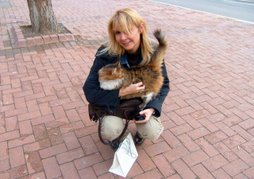
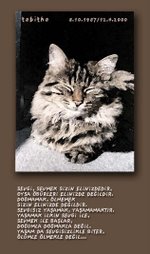
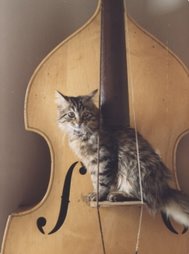

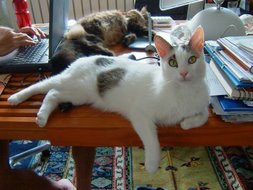
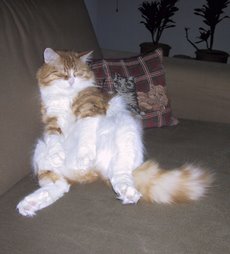
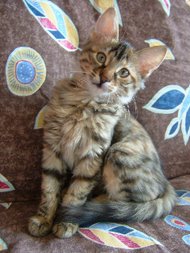
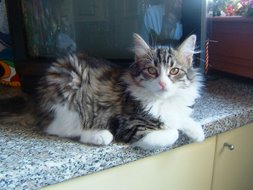


Hiç yorum yok:
Yorum Gönder